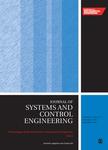版权所有:内蒙古大学图书馆 技术提供:维普资讯• 智图
内蒙古自治区呼和浩特市赛罕区大学西街235号 邮编: 010021

作者机构:Univ Technol & Appl Sci Nizwa Dept Math Nizwa 611 Oman Sultan Qaboos Univ Dept Elect & Comp Engn Muscat Oman
出 版 物:《PROCEEDINGS OF THE INSTITUTION OF MECHANICAL ENGINEERS PART I-JOURNAL OF SYSTEMS AND CONTROL ENGINEERING》 (机械工程师学会会报;I辑:系统与控制工程杂志)
年 卷 期:2022年第236卷第1期
页 面:87-106页
核心收录:
学科分类:08[工学] 0802[工学-机械工程] 0811[工学-控制科学与工程]
基 金:The author(s) received no financial support for the research authorship and/or publication of this article
主 题:Nonlinear robust control chaos synchronization Lyapunov direct theorem chaotic spacecraft finite-time stability
摘 要:This article reports the design of a novel finite-time robust nonlinear controller for the synchronization of two identical chaotic spacecraft. The proposed controller does not cancel nonlinear terms appearing in the chaotic spacecraft dynamics. Avoiding the cancelation of the nonlinear terms of the plant by the controller makes the closed-loop robust stable in the presence of uncertainties in the chaotic spacecraft parameters;this concept blooms base for the design of computationally efficient simple control law. The proposed finite-time robust nonlinear controller (1) synchronizes two nearly identical chaotic spacecraft in finite-time duration, (2) expedites the convergence of errors vector to zero without oscillation, and (3) eradicates the effects of external disturbances. Analysis based on the Lyapunov second theorem proves that the synchronization error converges fast and verifying the closed-loop s robust global stability. The finite-time stability technique affirms the convergence of the synchronization error to zero in settling time. This research article also studies the effects of the exogenous disturbances and the controller parameter s slowly smooth variations on the closed-loop performance. The controller parameter variation analysis sets the procedure for tuning the controller parameters. The computer-based simulation results validate the theoretical findings and provide a comparative performance analysis with the other recently proposed synchronization feedback controllers. This article uses Mathematica 12.0 version in the Microsoft 10 environment for all the simulations.